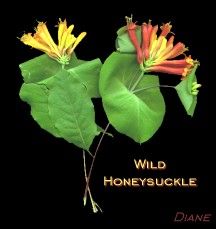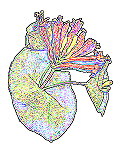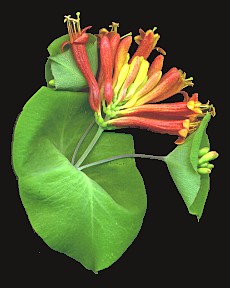The honeysuckle plant is a very hardy specimen that thrives both wild and in a garden. The ones shown here are variations of the orange wild honeysuckle that grows in our fir woods here in the Northwest. As you can see, the flowers on this plant can range from a bright yellow to a bright red, but the "average" is orange.
Honeysuckle has some really positive things going for it. It has attractive flowers with bright colors. The scent is light but refreshing. The "honey" (nectar) is very sweet and a favorite of hummingbirds, bees, and all ages of children (grin). The plant, which is actually a shrub with the woody stem vining around a support, is very hardy.
The negative thing about the honeysuckle centers on this last sentence. As we walk through our woods, we see occasional firs which have died because the twining stem of a honeysuckle plant, after years of growth, has slowly choked that tree to death. Although the honeysuckle's roots are in the soil, not in the tree's bark, the plant is essentially a parasite in that it requires a support and often uses the handiest tree for this purpose. The best I can say for this is that it provides standing snags or "woodpecker trees" the various woodpeckers that nest in our woods.
Although this problem is unavoidable in the wild, it is easily controllable in the garden by planting the honeysuckle well away from vulnerable trees, and by providing a wall, trellis, or other support for the honeysuckle to twine around. Check each year for new growth and train any vagrant stems back around the provided support.
Now you can enjoy this colorful plant, and the visitors it attracts, without worrying about its "clinging vine" habits!




